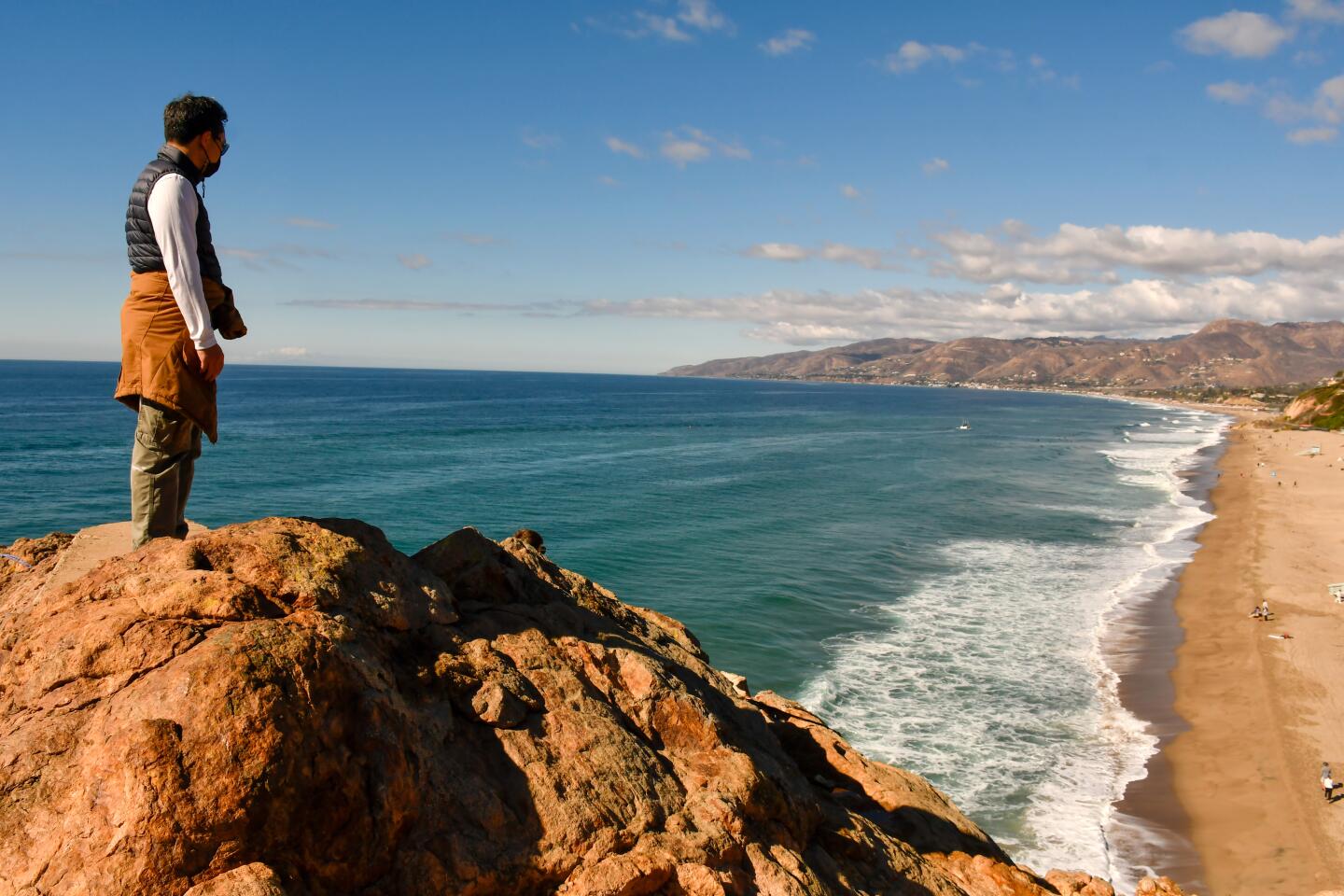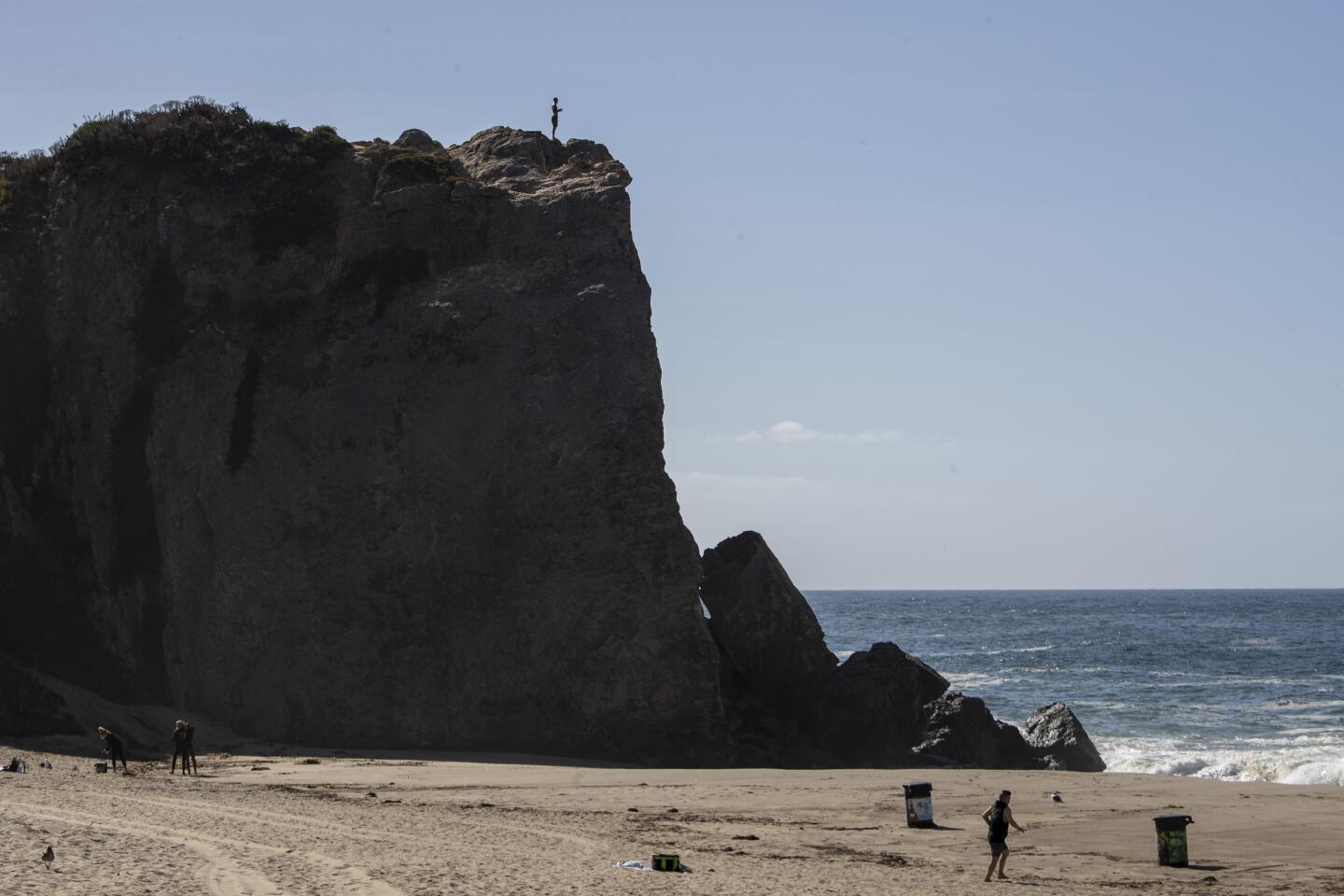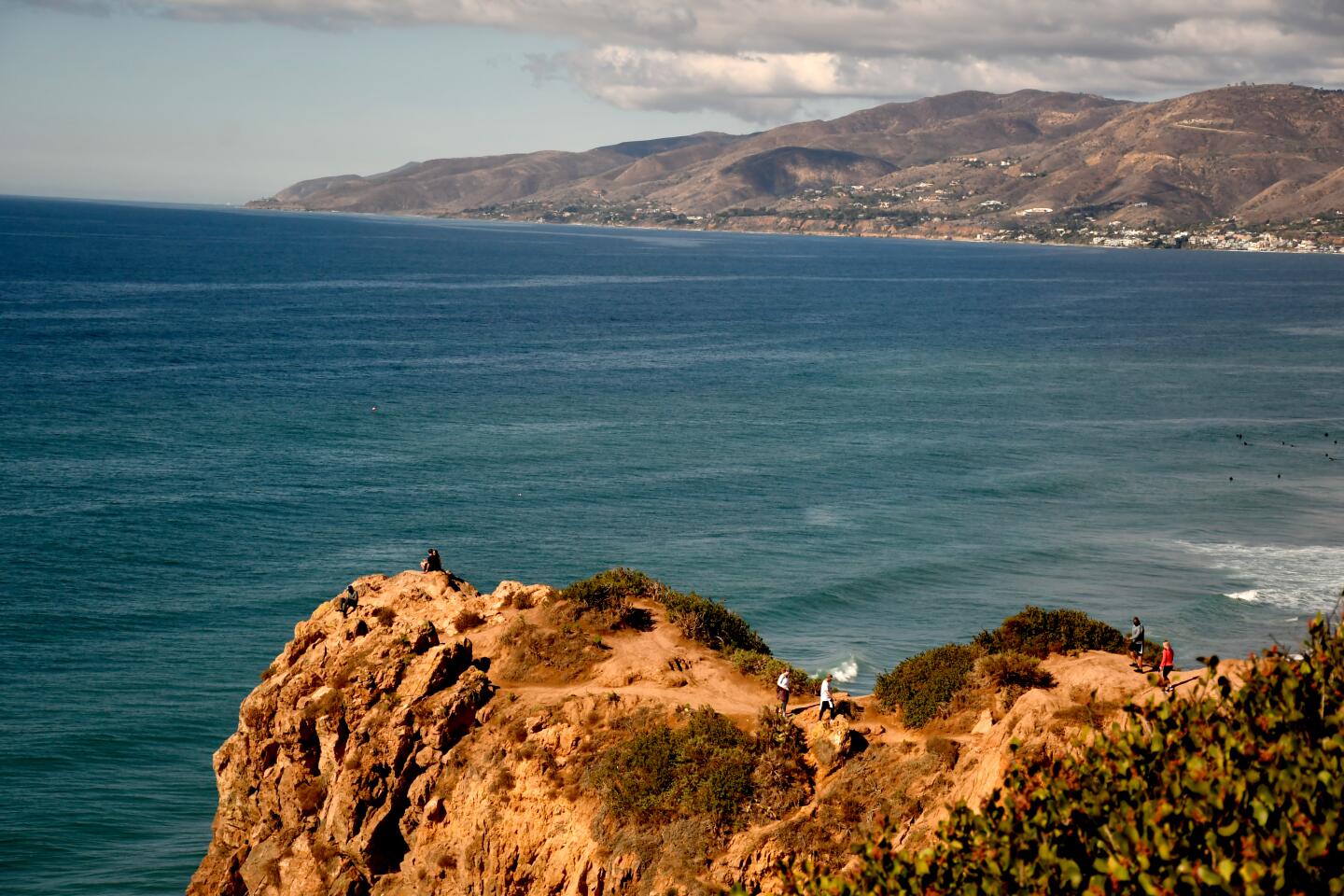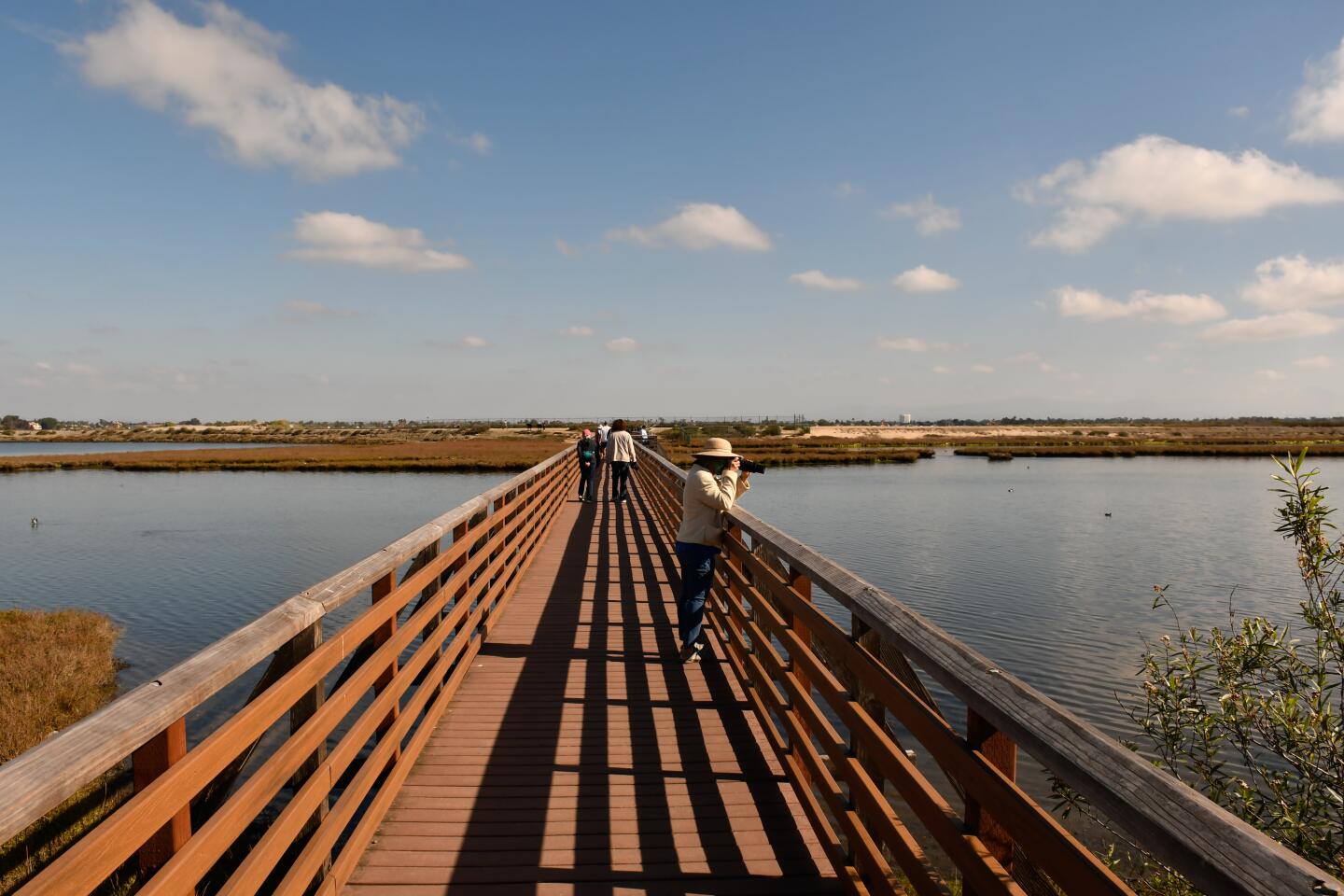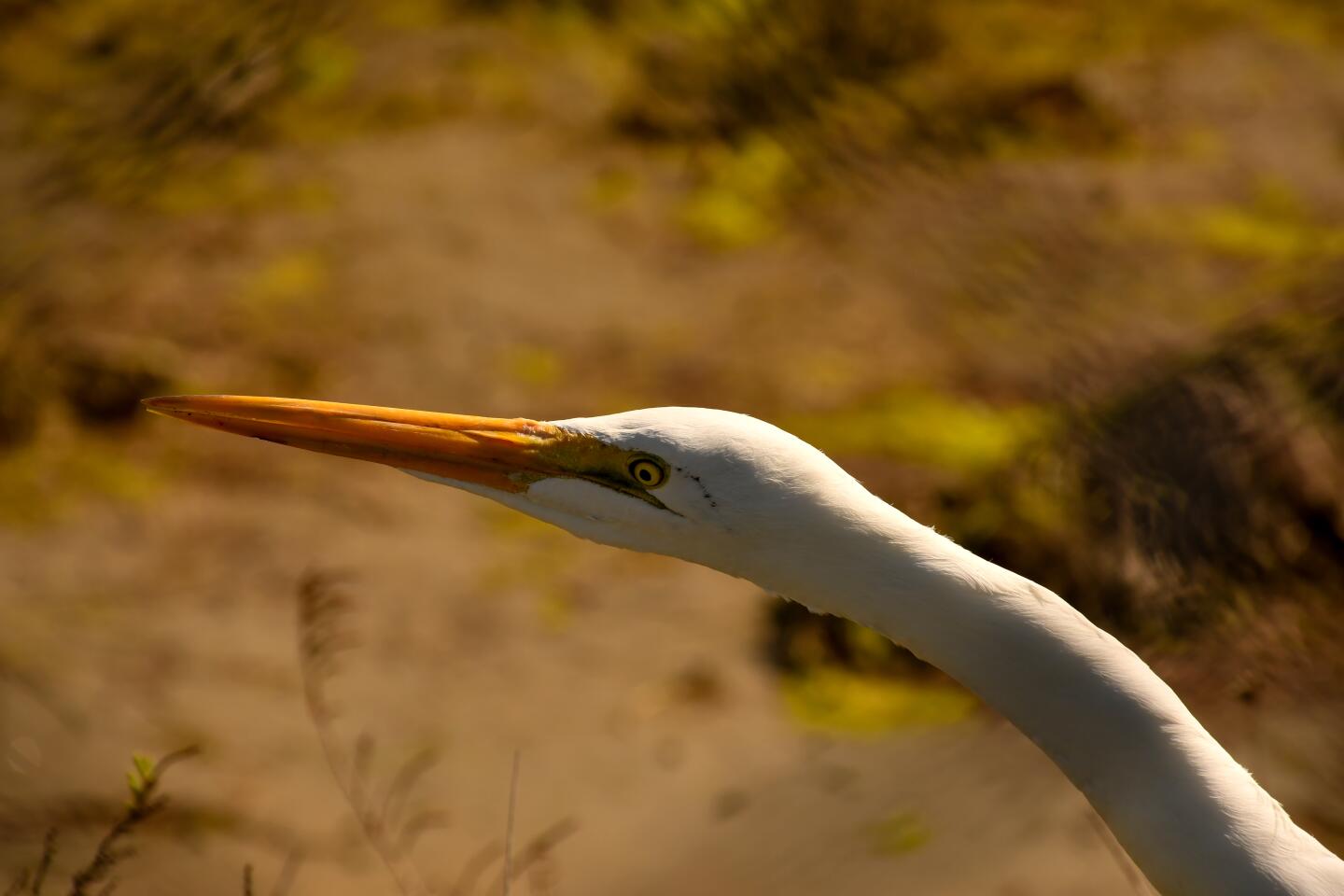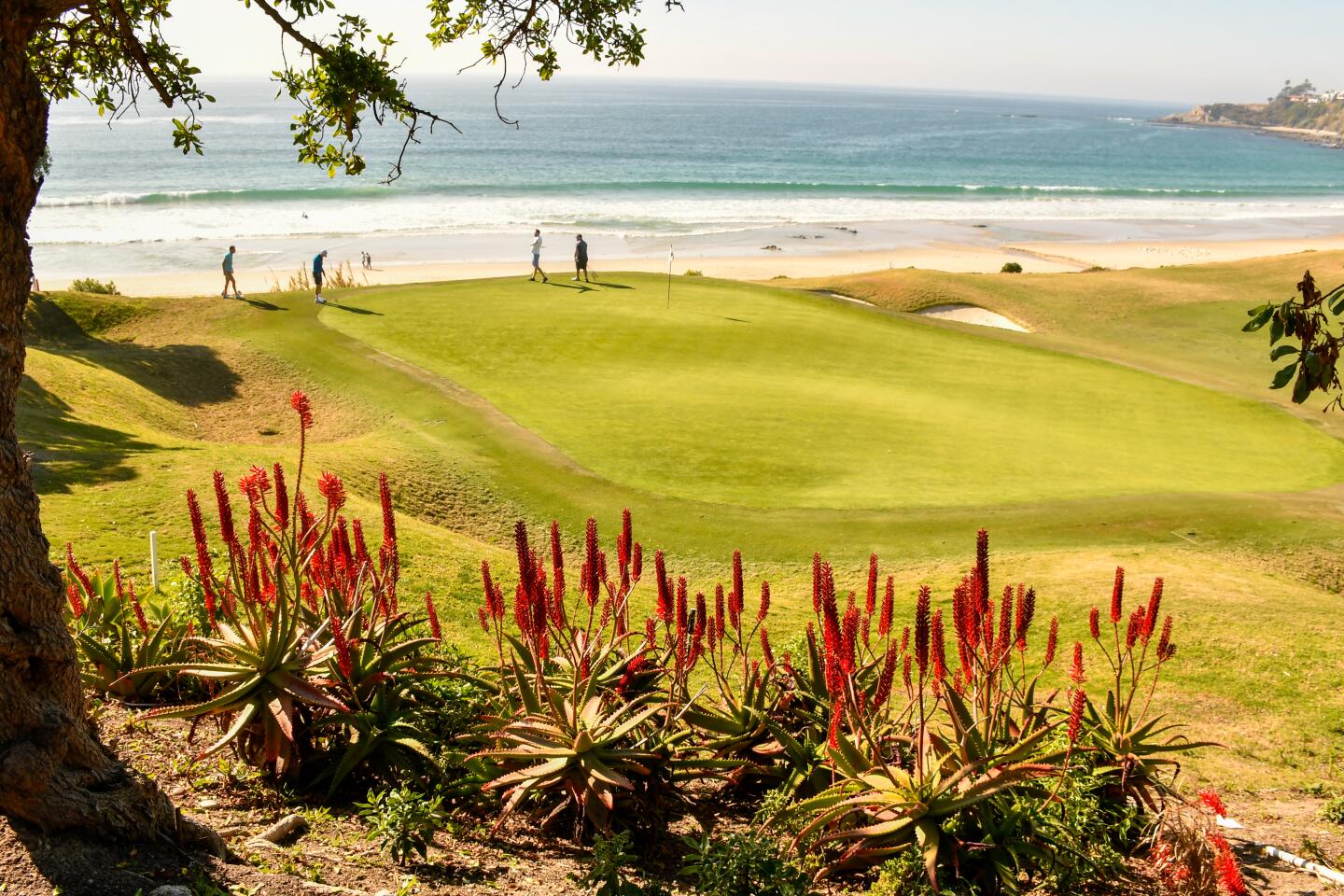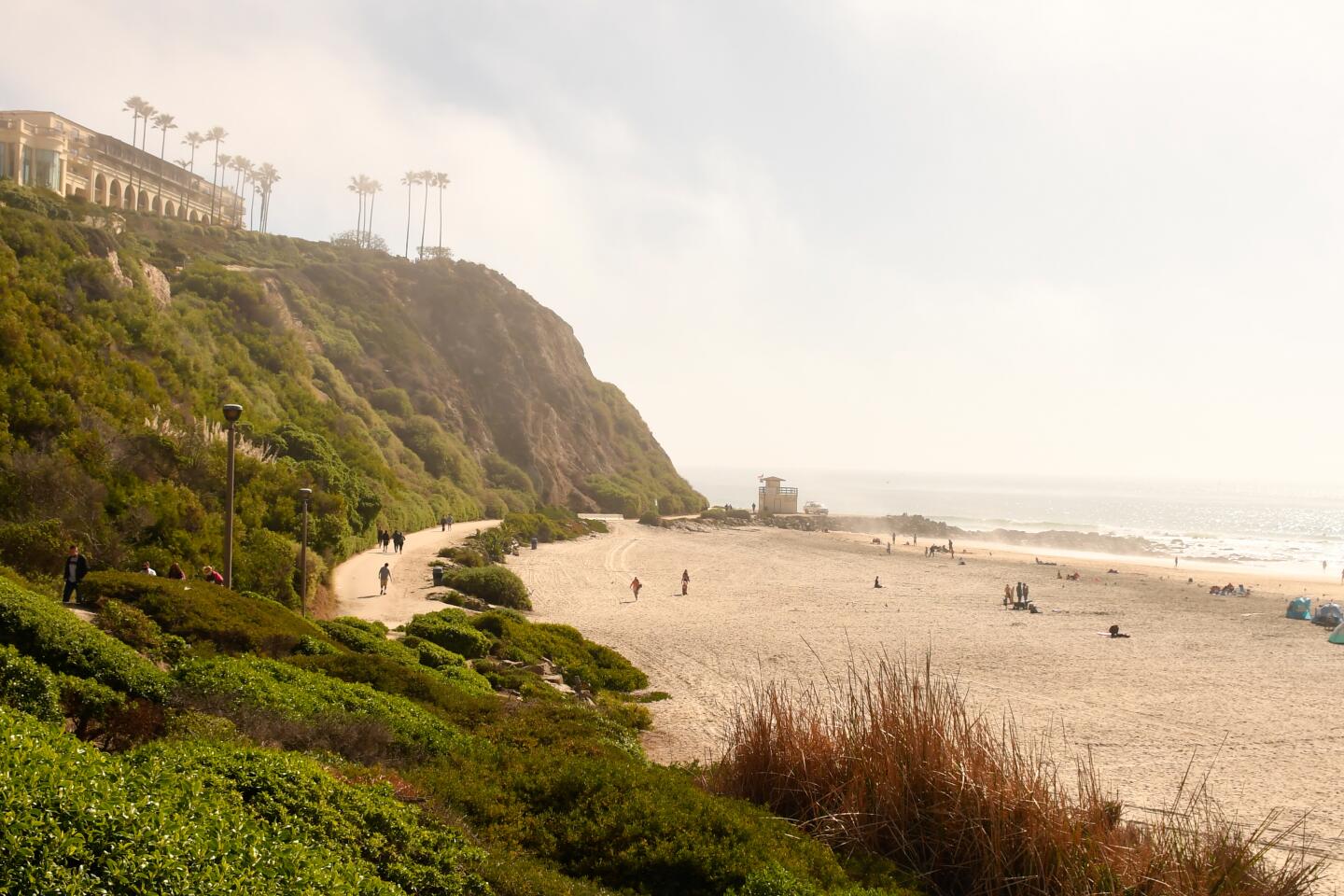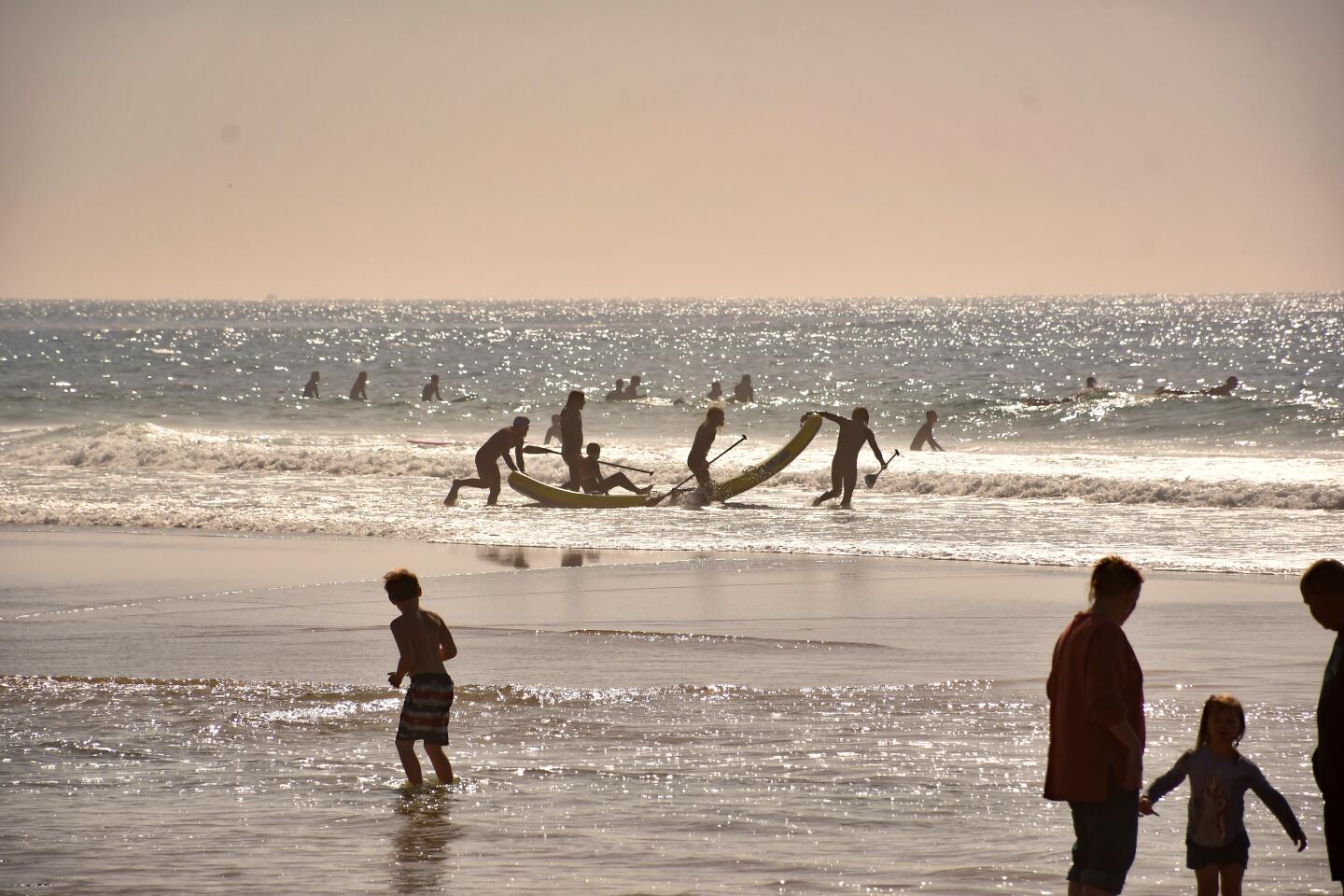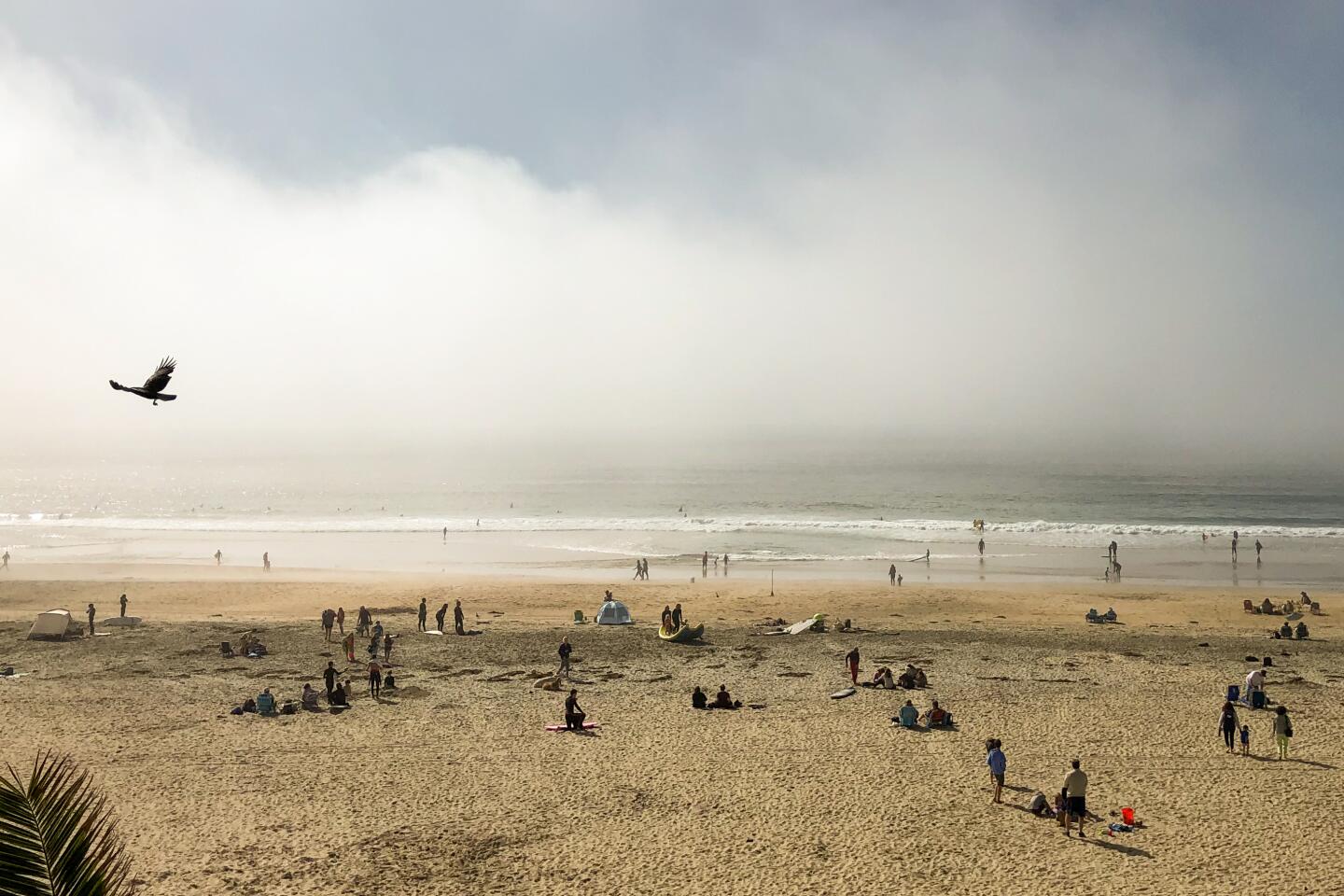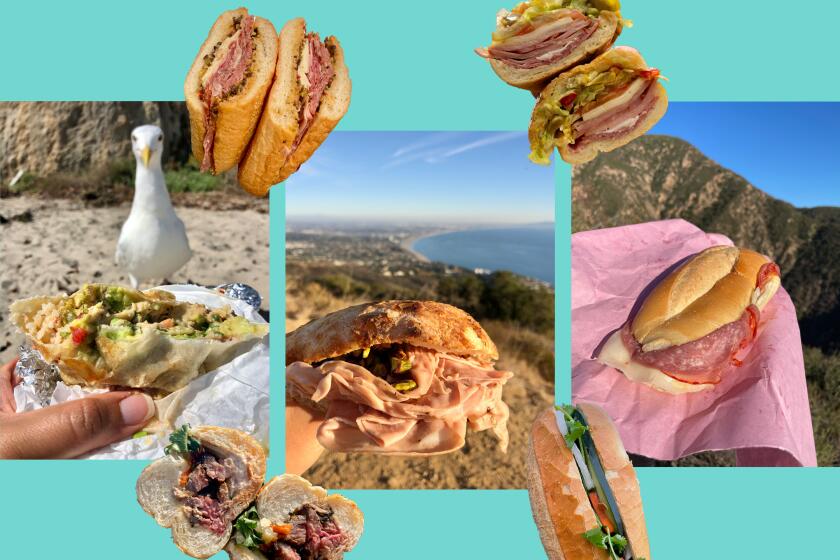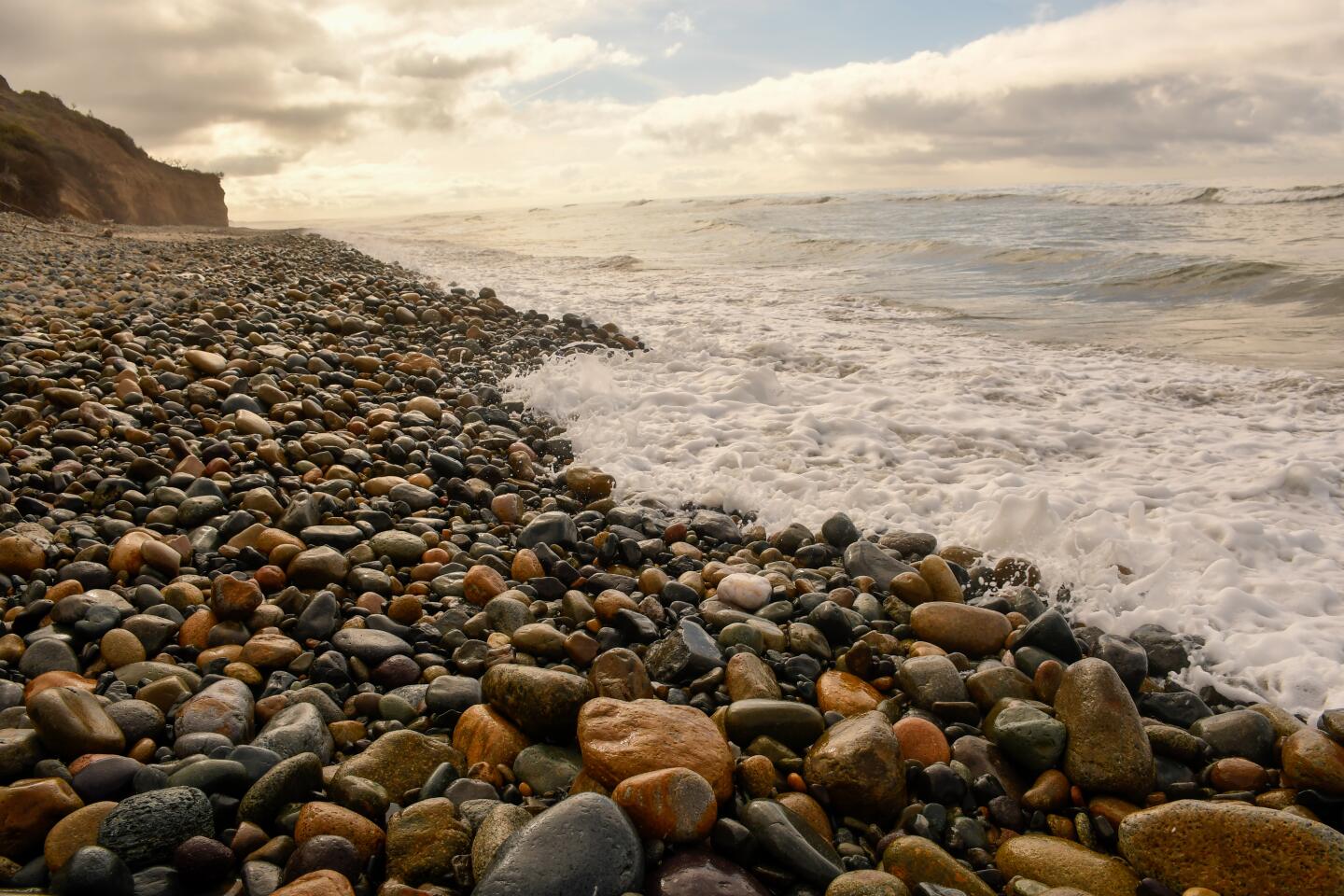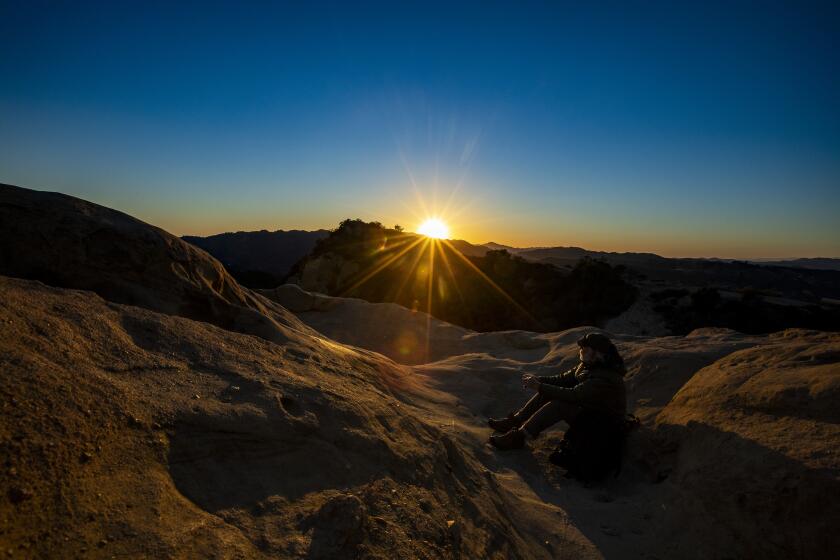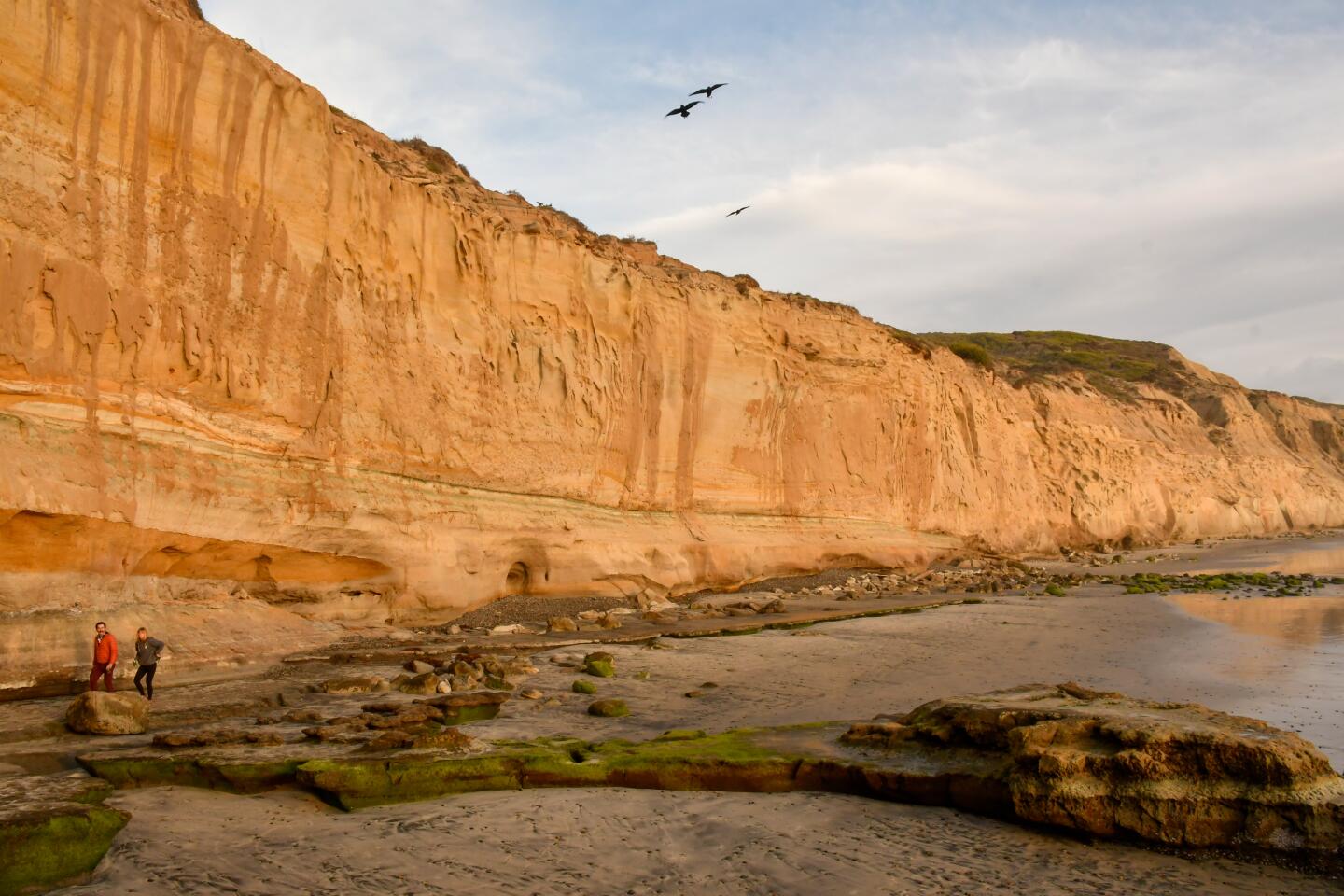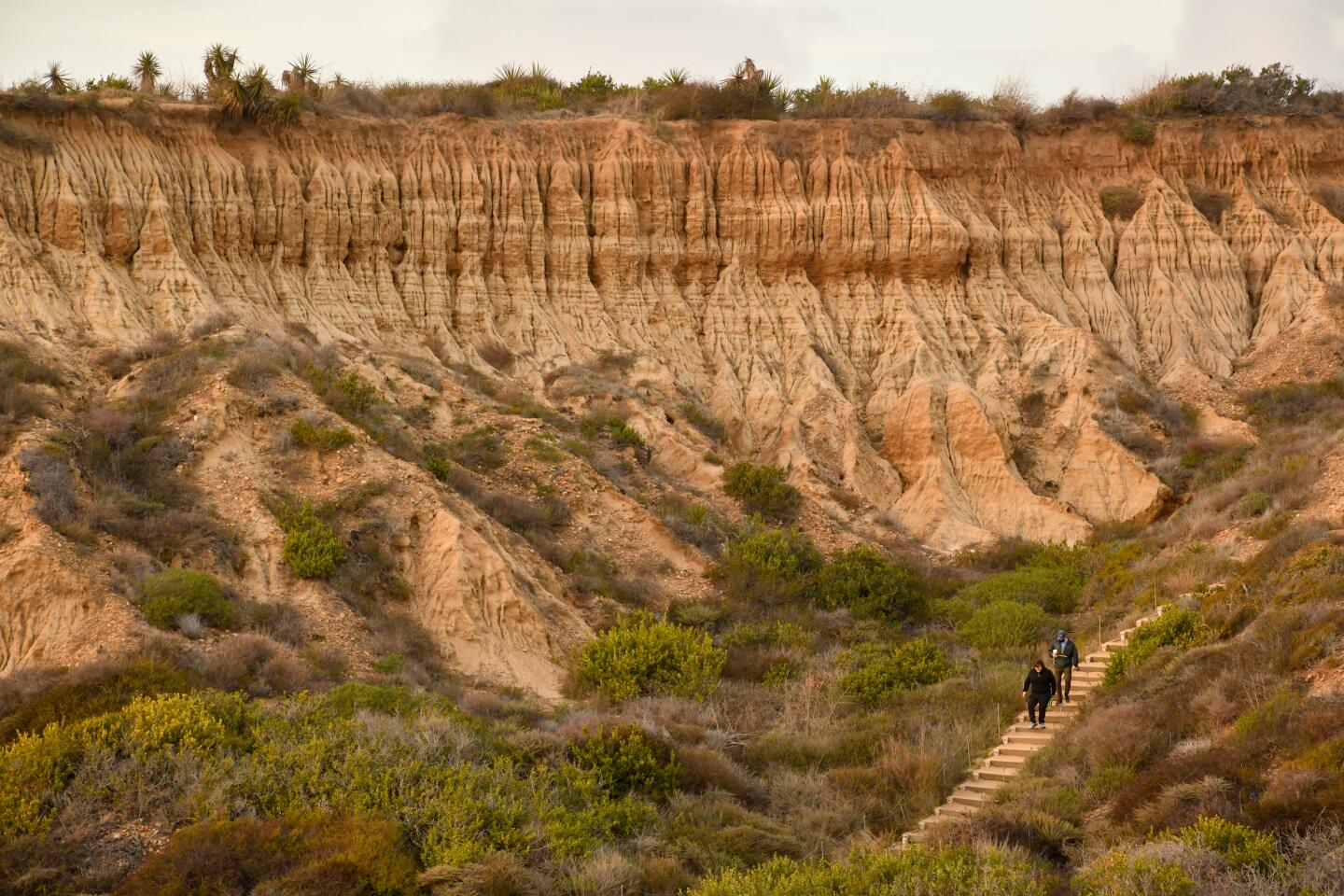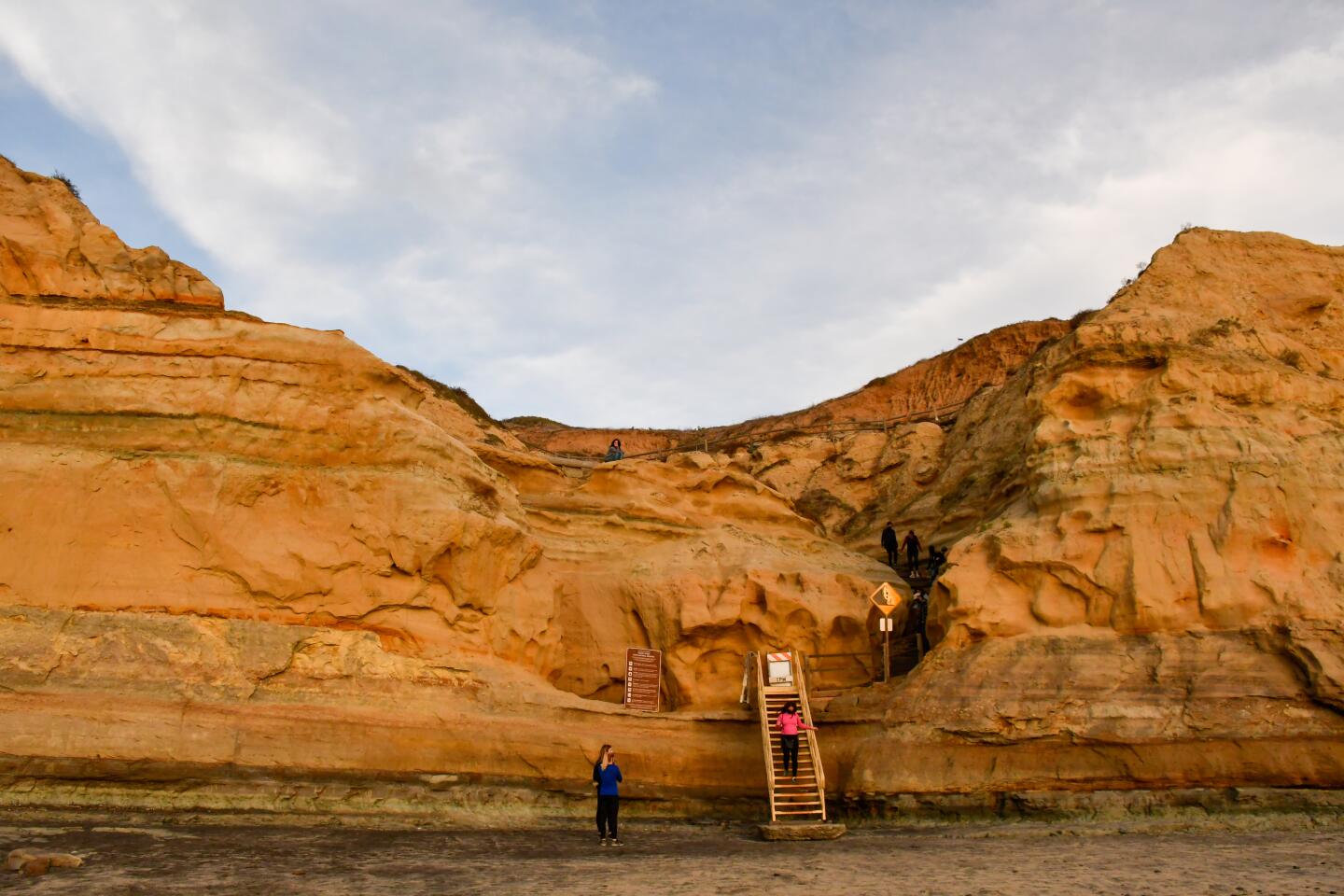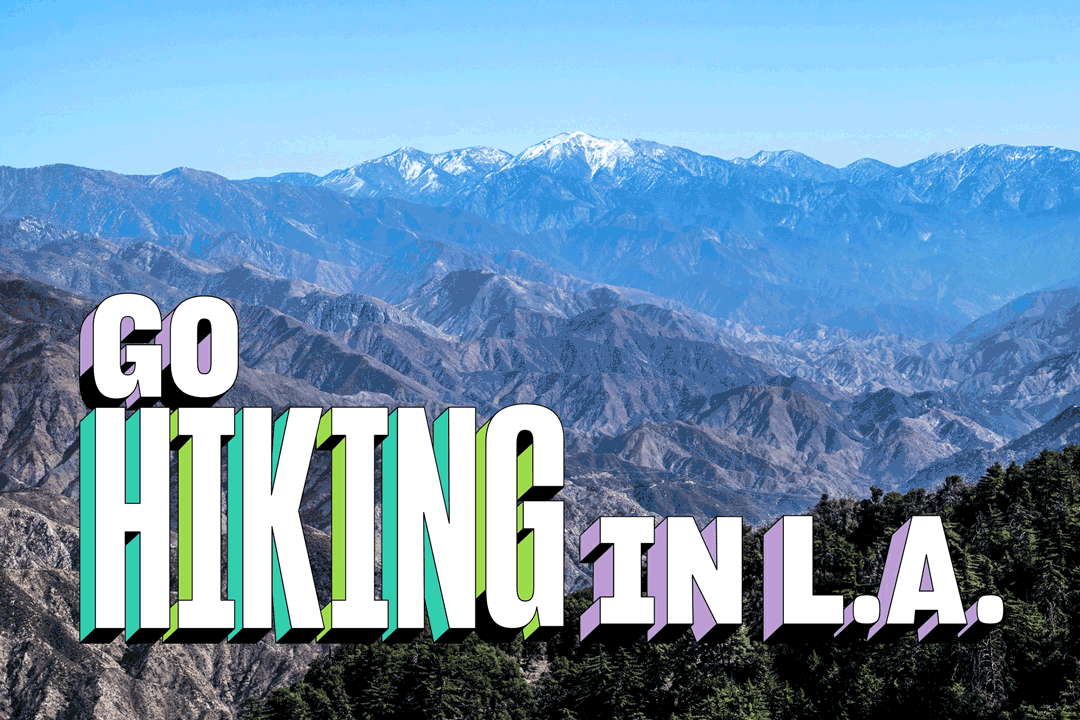
- Share via
This story is part of our ultimate guide to hiking in L.A.
Here are five Southern California trails that do something most hikes don’t — take you to the edge of the ocean. They’re mostly flat, which is why hardcore hikers often scorn them, and some are busy on weekends. They range in length from a little more than a mile to a little more than seven miles.
Are these walks or hikes? You decide.
Either way, they’re part of a vast, incomplete project known as the California Coastal Trail. The idea is to link and build coastal trails so that a hiker could cover the state’s entire coast, a journey of perhaps 1,270 miles depending on how you connect the routes.

This is more than a crazy dream. In 1972, voters backed an initiative requiring that “a hiking, bicycle, and equestrian trails system be established along or near the coast” and that “ideally the trails system should be continuous and located near the shoreline.”
Almost 50 years later, the California Coastal Commission, Coastal Conservancy, state parks system and Caltrans have many miles and many years to go on this joint project, with funding cobbled together from public and private sources.
As officials are quick to point out, this trail is not a single line, like the 2,650-mile Pacific Crest Trail from Mexico to Canada, but a braided network of paths, some designed for hikers only, some for bicycles, some for equestrians.
“All of the easy things have been accomplished,” said Gregory Fearon, co-chair of the coastal-access group Coastwalk in Sonoma County. “We’re now facing the ones that are harder.”
Among the many gaps remaining: parts of Camp Pendleton in San Diego County and Hollister Ranch in Santa Barbara County, where homeowners have waged a legal fight against access advocates for years.
But hundreds of miles of coastal trails have been blazed. Coastal Conservancy officials say that if you add up trail segments from the Mexican border to the Oregon border, the effort is roughly 60% complete.
“With every foot you add, you get that much closer to connections between segments,” said Linda Locklin, public access program manager for the California Coastal Commission.
In the meantime, hikers have sources such as ModernHiker.com, AllTrails.com (or app), SoCalHiker.net and the Coastal Commission’s YourCoast app (which lists access points but not trail systems).
Here, north to south, are five Southern California coastal trails.
Point Dume Cove Trail
Point Dume State Beach, Malibu
Distance: 1.4 mile-loop, 347 feet of gain. No dogs or bikes.
This is a busy but highly satisfactory network of trails. From Cliffside Drive, a slight uphill walk of a few hundred yards brings you to the point’s highest part, a flat-topped hill with a commanding panorama of ocean, beach and coastal bluffs.
I showed up on a brisk day, ideal for a beach walk, and there were dozens of us on the paths. I can picture some nasty foot traffic in the hour before sunset, but I can’t imagine a better place to stand and scan the sea for gray whales, which are common from February through April.
Whether you’re looking for ocean views or desert landscapes or soaring mountain peaks, Los Angeles offers miles upon miles of strikingly different trails.
You get a wide view of Santa Monica Bay from the point’s high ground or the 200-yard boardwalk near the top of the hill. As a plaque notes, Point Dume got its name from English explorer George Vancouver, who sailed by in 1793, attempted to name it for Francisco Dumetz, a Franciscan priest at the Ventura mission, and apparently left out the “tz.”
Besides savoring the view from up top, hikers usually can take a side trail down to some tide pools. But it was taped off in February, with a crane parked at the site. Rangers say new stairs to the tide pools will be installed by the end of March.
Northwest of the high point, follow the main trail to a rocky promontory that looks down on Pirate’s Cove Beach and a jumble of black rocks and tide pools. To your right, the broad, sandy expanse of Point Dume State Beach reaches northwest and blends into Zuma Beach.
I covered the entire network of paths at the point in about 90 minutes (with plenty of time for photography). If you like, you can add more steps by strolling north up the beach toward Zuma and doubling back later. It’s all flat sand.
Tip: To start at the beach, take Malibu’s Westward Beach Road to Birdview Avenue, then park at Point Dume State Beach. To start atop the bluffs, head for the 29200 block of West Cliffside Drive, where there are 10 two-hour parking spots. If they’re full, continue to Grasswood Avenue, turn left and look for street parking once it’s legal.
Bolsa Chica Ecological Reserve
Huntington Beach
Distance: 4½-mile loop, 78 feet of gain. No dogs or bikes on trail.
The Bolsa Chica Ecological Reserve covers about 1,300 acres. You can make this route longer or shorter, according to taste. If you love birds or if there’s a great sunset, you’ll want to cover the same 4½ miles that I did, and maybe even add the adjacent Brightwater Trail. To add beach mileage, cross Pacific Coast Highway to Bolsa Chica State Beach, which is three miles long.
If you’re not big on birds and you’re walking in not-so-dramatic light, this area may prove a bit dull (the scenery doesn’t change much) and loud (cars roar past on Pacific Coast Highway).
I did share some pleasant moments with a great egret, and I liked the boardwalk over the water and the inland portion of the Bolsa Pocket Loop, probably because there were a few tall trees and I was farther from PCH. Trails are a mix of dirt, blacktop and boardwalk.
Tip: There are two small parking areas (each free, with portable toilets). If you park in the one at 3842 Warner Ave. in Huntington Beach, start with the Mesa Trail, which segues to the Pocket Loop Trail, the wide path atop the flood control channel and Inner Bay Loop Trail. If you park in the lot accessible from northbound Pacific Coast Highway, you’ll do that backward, beginning with the Inner Bay Loop.
Salt Creek Trail
Laguna Niguel and Dana Point
Distance: 7.6 miles out and back, 849 feet of gain. Dogs on leashes and bikes allowed.
This multiuse trail, in the heart of O.C. suburbia, was mostly empty on a Saturday morning, but it got busier as I made my way west on the wide, paved path curving to follow Salt Creek. (Besides traditional cyclists, be ready for plenty of e-bikes humming past.) I didn’t see snakes or hear frogs, but both are said to show up here and there.
The route begins with a gentle descent and leads through a classic Southern California landscape of chaparral and rolling hills, passing through three tunnels under busy streets (Niguel Road, Camino del Avion and Pacific Coast Highway).
A hike is a good excuse to eat a sandwich. A sandwich improves every hike, and in L.A., you can almost always find one not far from the other.
The trickiest bit came after the tunnel under Niguel Road, when a hiker/walker faces three choices. You want the least obvious one — the uphill path to the far right, nearest to Fratello’s restaurant.
Near the trail’s western end, it skirts the Monarch Beach Golf Links and ends at Salt Creek Beach Park, north of the Ritz-Carlton Laguna Niguel. I happened to arrive just as the morning fog was lifting and a handful of guys were getting ready to take a pair of goats surfing.
In other words, just another beach weekend, right?
Tip: Start at the inland end of this route at Chapparosa Community Park in Laguna Niguel, where parking is free. The trailhead is next to the park’s baseball fields.
Bluffs Beach Trail
San Onofre State Beach, San Clemente
Distance: 3.8-mile-loop, 216 feet of gain. No dogs allowed on the beach.
Think of this hike as a pandemic silver lining. San Onofre State Beach is usually busy with campers. But because the state campground is closed as an anti-COVID measure, you can just about have the trails and beach to yourself, especially on weekdays.
As you drop down to the beach from Trailhead 3, a spectacular coastal panorama will open to the southeast (and if you’re hiking in the morning, the light in that direction might be dramatic). You’ll be surrounded by coastal brush and crumbling cliffs that are at once beautiful and daunting. A sign notes that “more than 80 percent of the cliffs at San Onofre are considered to be actively sliding.”
I headed right up the coast (northeast), toward the twin domes of the idle San Onofre nuclear generating plant. Most of this route is a walk on the beach, but that doesn’t mean it’s easy.
If you arrive at or near high tide (as I did; bad planning), much of the sand will be underwater, and you’ll need to trudge along on well-tumbled stones, some the size of pingpong balls, some the size of watermelons. They are fascinating to look at (many are eerily round) but taxing to walk on. When the tide retreats over those stones, it makes a great rattle.
Best way to complete the trail through the Santa Monica Mountains from Malibu to Pacific Palisades
It’s just shy of two miles from Trail 3 to the Cristianitos fault, a dramatic example of this region’s geologic instability. You’ll know when you’ve arrived: Along the cliff face above you, the spot is marked by the beginning of a big blond band of rock — a layer so abrupt and even that at first I thought it had been put up by Southern California Edison. (The twin domes are less than a mile up the coast.)
On the way back, I took the fairly steep Trail 2 to the top of the bluffs, paused a minute to pant, then followed a dull blufftop path back to my car. In all, I saw five surfers, three hikers, a handful of cyclists and a handful of rangers in their cars. Three calming hours. Next time, I’ll be tempted to explore the territory southeast of Trail 3.
If you try this hike, thank the Marines. The 3,000 acres of San Onofre State Beach are owned by the Marine Corps (along with the rest of Camp Pendleton) and leased to the state of California. The lease expires Aug. 31, but the Marines have tentatively agreed to an extension of at least three years.
Tip: Once you drive into the park (5200 S. Pacific Coast Highway, San Clemente)
and pay your $15 day-use fee (open 6 a.m. to sunset), follow an access road that parallels the coast, lined by parking spaces and trailheads, numbered 1-6 from north to south. Start at Trailhead 3 (which is better marked than some others).
Torrey Pines State Natural Reserve
Torrey Pines State Beach, La Jolla
Distance: 3-mile loop, 300 feet of gain. No dogs allowed on trail and beach.
Botanists will hate me, but for most of us the pines are the least of this place. The rocks, dirt and water rule.
As at San Onofre, this 2,000-acre reserve’s trails cover crumbling cliffs and a long beach, best enjoyed at low tide. But these sandstone cliffs are taller and the trails are mostly on top of those cliffs, offering commanding views. Whenever you go, from 7 a.m. to sunset, there will be plenty of people.
It’s a great family spot, though it does include the challenge of more than 100 sandy stairsteps between beach and clifftop.
I followed the Beach Trail (¾ mile) and took detours to Red Butte and Yucca Point Overlook (½ mile) on the way. The trails, some bordered by cables, cut through coastal sage scrub. From the high points, the fragility of the ravines is clear. From below, so is the power of the sea.
Why hike in Los Angeles? Lots of reasons. Use our guide to navigate 50 trails in Southern California, plus tips on gear and treats for the trail.
After meandering on the beach and sampling the tide pools, I took the Beach Trail back up top, then avoided crowds by taking the reserve’s longest trail, the Broken Hill Trail’s north fork (1.2 miles) along the clifftop and through the chaparral and sagebrush, with a half-mile walk from the trailhead to my car.
One drawback to this route: You won’t get close to any Torrey pines, which are North America’s rarest pine tree species. For that, take the Guy Fleming Trail to the North Overlook. (And remember, if you hiked all six of the reserve’s trails, it would be less than 10 miles.)
Bottom line: The whole thing is spectacular. When I close my eyes and imagine my favorite Southern California scenery, this place pops up.
Tip: On entering the reserve (12600 N. Torrey Pines Road, La Jolla), pay the $12-$25 day-use fee (demand-based pricing). Then choose option 1: Park near the beach in the South Beach Lot (which fills first) or the North Beach Lot, then hike up the road to the cliff top and down to the shore again. Or option 2: Drive to the Upper Lots atop the cliffs, park at the trailhead, and hike down to the beach and back up again. I chose option 1 to be up high for sunset and avoid walking next to vehicular traffic.
More to Read
Sign up for The Wild
We’ll help you find the best places to hike, bike and run, as well as the perfect silent spots for meditation and yoga.
You may occasionally receive promotional content from the Los Angeles Times.

